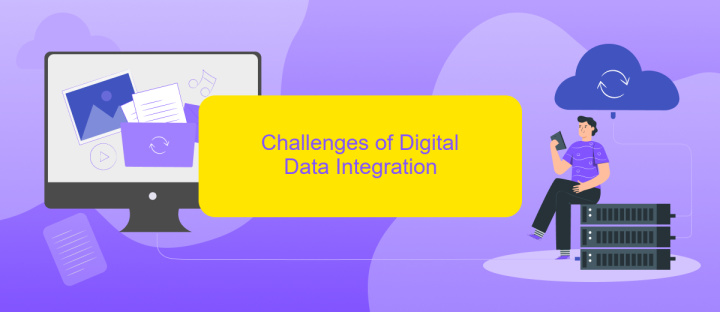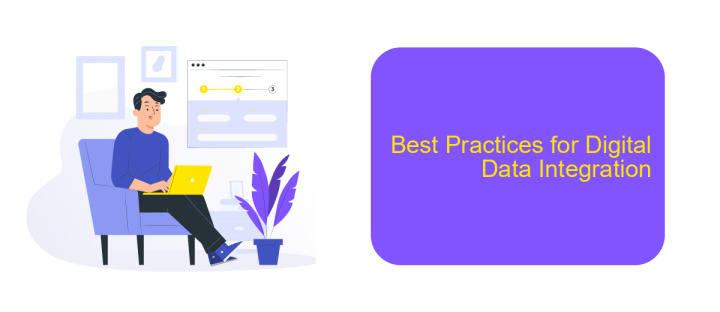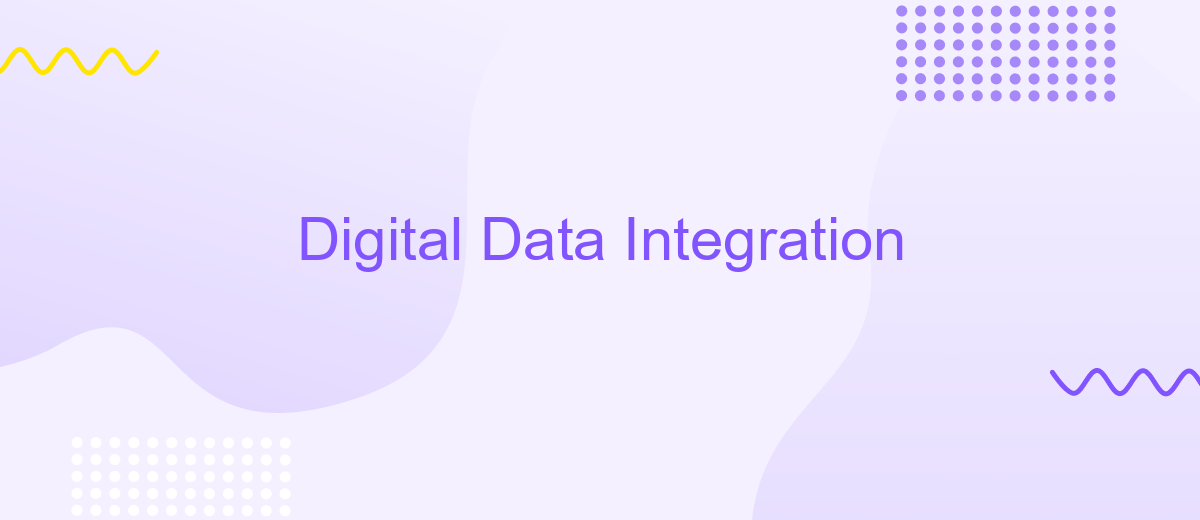Digital Data Integration
In today's rapidly evolving technological landscape, digital data integration has become a cornerstone for businesses aiming to streamline operations and enhance decision-making. By seamlessly combining data from various sources, organizations can achieve a unified view of their information, driving efficiency and innovation. This article explores the key strategies, benefits, and challenges associated with digital data integration in the modern business environment.
Introduction
In today's digital age, the seamless integration of data across various platforms is crucial for businesses aiming to optimize operations and enhance decision-making processes. Digital Data Integration refers to the practice of combining data from different sources and providing users with a unified view. This process ensures that information is consistent, accurate, and readily available for analysis and reporting.
- Improved data accuracy and consistency
- Enhanced decision-making capabilities
- Streamlined business processes
- Increased operational efficiency
One of the tools that facilitate effective data integration is ApiX-Drive. This service allows businesses to automate data transfer between various applications without the need for extensive coding knowledge. By leveraging ApiX-Drive, organizations can ensure that their data is synchronized in real-time, reducing the risk of errors and saving valuable time. As a result, businesses can focus more on strategic initiatives rather than manual data management tasks.
Benefits of Digital Data Integration

Digital data integration offers numerous benefits that streamline business operations and enhance decision-making processes. By consolidating data from various sources into a unified system, organizations can achieve a higher level of accuracy and consistency in their data management. This integration enables real-time data access, reducing the time spent on manual data entry and minimizing errors. Consequently, companies can make more informed decisions quickly, leading to improved efficiency and productivity.
Moreover, digital data integration facilitates better collaboration among different departments by providing a single source of truth. Tools like ApiX-Drive simplify the integration process, allowing businesses to connect various applications and automate workflows without extensive technical expertise. This not only saves time but also reduces costs associated with manual integration efforts. Ultimately, digital data integration enhances the overall agility of an organization, enabling it to respond more swiftly to market changes and customer demands.
Challenges of Digital Data Integration

Digital data integration is a complex process that involves combining data from various sources into a cohesive and usable format. This task is often fraught with numerous challenges that need to be addressed to ensure seamless integration and data integrity.
- Data Quality: Ensuring the accuracy, consistency, and reliability of data from different sources can be difficult. Inconsistent data formats or incomplete data can lead to erroneous conclusions.
- Compatibility Issues: Different systems often use different data formats, making it challenging to integrate them without significant transformation efforts.
- Security Concerns: Integrating data from multiple sources increases the risk of data breaches and unauthorized access, necessitating robust security measures.
- Scalability: As the volume of data grows, the integration system must be scalable to handle increased loads without performance degradation.
- Cost: Implementing and maintaining a data integration system can be expensive, requiring both financial and human resources.
To mitigate these challenges, services like ApiX-Drive offer automated solutions that simplify the integration process. ApiX-Drive allows businesses to connect various applications and data sources seamlessly, ensuring data quality, compatibility, and security while being cost-effective and scalable. By leveraging such tools, organizations can focus on deriving actionable insights from their integrated data rather than struggling with the integration process itself.
Best Practices for Digital Data Integration

Effective digital data integration begins with a clear understanding of your data sources and objectives. Establishing a robust data integration strategy is crucial for ensuring seamless data flow and accuracy across different systems. Start by mapping out your data architecture and identifying key data points that need to be integrated.
Utilizing reliable integration tools can significantly streamline the process. For instance, ApiX-Drive offers a user-friendly platform that allows businesses to connect various applications and automate data transfer with ease. This not only saves time but also reduces the risk of errors associated with manual data handling.
- Define clear data integration goals and objectives.
- Select appropriate integration tools like ApiX-Drive.
- Ensure data quality and consistency across systems.
- Implement robust security measures to protect data.
- Regularly monitor and update integration processes.
Adhering to these best practices will help in achieving efficient digital data integration, thereby enhancing overall business operations. By leveraging tools like ApiX-Drive, organizations can ensure that their data is accurate, secure, and readily accessible, ultimately driving better decision-making and operational efficiency.


Future of Digital Data Integration
The future of digital data integration is poised to be shaped by advancements in automation and artificial intelligence. As businesses continue to generate vast amounts of data, the need for seamless and efficient integration solutions becomes more critical. Emerging technologies will enable real-time data processing, ensuring that information is not only integrated but also analyzed and acted upon instantly. This will lead to more informed decision-making and optimized business processes, driving growth and innovation across industries.
Moreover, services like ApiX-Drive are set to play a crucial role in this evolving landscape. ApiX-Drive simplifies the integration process by offering a user-friendly platform that connects various applications and automates data workflows. By reducing the complexity and time required for integrations, businesses can focus on leveraging their data for strategic initiatives. As these tools become more sophisticated, we can expect even greater levels of customization and efficiency, paving the way for a future where digital data integration is not just a necessity but a strategic advantage.
FAQ
What is Digital Data Integration?
Why is Digital Data Integration important?
What are the common challenges in Digital Data Integration?
How can businesses automate Digital Data Integration?
What is ApiX-Drive, and how does it help with Digital Data Integration?
Apix-Drive will help optimize business processes, save you from a lot of routine tasks and unnecessary costs for automation, attracting additional specialists. Try setting up a free test connection with ApiX-Drive and see for yourself. Now you have to think about where to invest the freed time and money!

